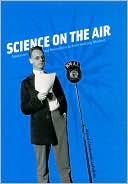Category Books
- Fiction Books & Literature
- Graphic Novels
- Horror
- Mystery & Crime
- Poetry
- Romance Books
- Science Fiction & Fantasy
- Thrillers
- Westerns
- Ages 0-2
- Ages 3-5
- Ages 6-8
- Ages 9-12
- Teens
- Children's Books
- African Americans
- Antiques & Collectibles
- Art, Architecture & Photography
- Bibles & Bible Studies
- Biography
- Business Books
- Christianity
- Computer Books & Technology Books
- Cookbooks, Food & Wine
- Crafts & Hobbies Books
- Education & Teaching
- Engineering
- Entertainment
- Foreign Languages
- Game Books
- Gay & Lesbian
- Health Books, Diet & Fitness Books
- History
- Home & Garden
- Humor Books
- Judaism & Judaica
- Law
- Medical Books
- New Age & Spirituality
- Nonfiction
- Parenting & Family
- Pets
- Philosophy
- Political Books & Current Events Books
- Psychology & Psychotherapy
- Reference
- Religion Books
- Science & Nature
- Self Improvement
- Sex & Relationships
- Social Sciences
- Sports & Adventure
- Study Guides & Test Prep
- Travel
- True Crime
- Weddings
- Women's Studies
Science on the Air: Popularizers and Personalities on Radio and Early Television »

Authors: Marcel Chotkowski LaFollette
ISBN-13: 9780226467597, ISBN-10: 0226467597
Format: Hardcover
Publisher: University of Chicago Press
Date Published: September 2008
Edition: (Non-applicable)
Author Biography: Marcel Chotkowski LaFollette
Marcel Chotkowski LaFollette is an independent historian who has taught at the Johns Hopkins University, the George Washington University, and the Massachusetts Institute of Technology. She is the author of several books, including Making Science Our Own: Public Images of Science, 1910–1955, also published by the University of Chicago Press, and Reframing Scopes: Journalists, Scientists, and Lost Photographs from the Trial of the Century.
Book Synopsis
Mr. Wizard’s World. Bill Nye the Science Guy. NPR’s Science Friday. These popular television and radio programs broadcast science into the homes of millions of viewers and listeners. But these modern series owe much of their success to the pioneering efforts of early-twentieth-century science shows like Adventures in Science and “Our Friend the Atom.” Science on the Air is the fascinating history of the evolution of popular science in the first decades of the broadcasting era. Marcel Chotkowski LaFollette transports readers to the early days of radio, when the new medium allowed innovative and optimistic scientists the opportunity to broadcast serious and dignified presentations over the airwaves. But the exponential growth of listenership in the 1920s, from thousands to millions, and the networks’ recognition that each listener represented a potential consumer, turned science on the radio into an opportunity to entertain, not just educate.
Science on the Air chronicles the efforts of science popularizers, from 1923 until the mid-1950s, as they negotiated topic, content, and tone in order to gain precious time on the air. Offering a new perspective on the collision between science’s idealistic and elitist view of public communication and the unbending economics of broadcasting, LaFollette rewrites the history of the public reception of science in the twentieth century and the role that scientists and their institutions have played in both encouraging and inhibiting popularization. By looking at the broadcasting of the past, Science on the Air raises issues of concernto all those who seek to cultivate a scientifically literate society today.
Publishers Weekly
One of the reasons Orson Welles's dramatization of The War of the Worlds convinced so many people that New Jersey was really being invaded by Martians was that radio listeners of the late 1930s had grown accustomed to hearing scientists interviewed on the air, according to this lively history. LaFollette traces the American scientific community's participation in mass media over a period of three decades , from the first radio appearance of Smithsonian curator Austin Clark to a series of television specials directed by Frank Capra in the 1950s. From the beginning, she writes, such programming was caught up in the tension between educational and entertainment value, and the lecture-like format of early science shows gradually gave way to more dramatic presentations. Commercial pressures also kept controversial topics like evolution off the airwaves, and scientists were wary of getting involved with the sensationalist press. Though flecked with colorful details-like Clark's insistence that guests on his program wear tuxedos-LaFollette's approach is strongly academic; a brief epilogue hints at a potential parallel between early radio and early podcasting, but the analysis remains inconclusive. (Sept.)
Copyright © Reed Business Information, a division of Reed Elsevier Inc. All rights reserved.Table of Contents
List of Figures
Prologue 1
1 Tuxedos and Microphones 7
2 The Radio Nature League 27
3 Syndicating Science 45
4 Cooperative Ventures 65
5 Shifting Ground 87
6 A Twist of the Dial 113
7 Facts and Fictionalizations 133
8 Adventuring with Scientists 157
9 Broadcasting the Voice of the Atom 179
10 Illusions of Actuality 211
Epilogue: Entertaining Lessons 239
Bibliography 281
Index 299
Subjects
 Media
Media  Radio - History & Criticism
Radio - History & CriticismEntertainment
 Radio
Radio  Radio - History & Criticism
Radio - History & CriticismEntertainment
 Television
Television  Television - General & Miscellaneous
Television - General & MiscellaneousHistory
 History of Science
History of Science  Science
ScienceHistory
 World History
World History  Social & Cultural History
Social & Cultural HistoryNonfiction
 Social Sciences
Social Sciences  Media & Communications
Media & CommunicationsScience & Nature
 Social Sciences
Social Sciences  Media & Communications
Media & CommunicationsScience & Nature
 All Science & Nature
All Science & Nature  Science - General & Miscellaneous
Science - General & MiscellaneousSocial Sciences
 Media & Communications
Media & Communications  Radio - History & Criticism
Radio - History & CriticismNonfiction
 Entertainment
Entertainment  Media
MediaNonfiction
 Entertainment
Entertainment  Radio
RadioNonfiction
 Entertainment
Entertainment  Television
TelevisionNonfiction
 History
History  History of Science
History of ScienceNonfiction
 History
History  World History
World HistoryNonfiction
 Science & Nature
Science & Nature  All Science & Nature
All Science & Nature
